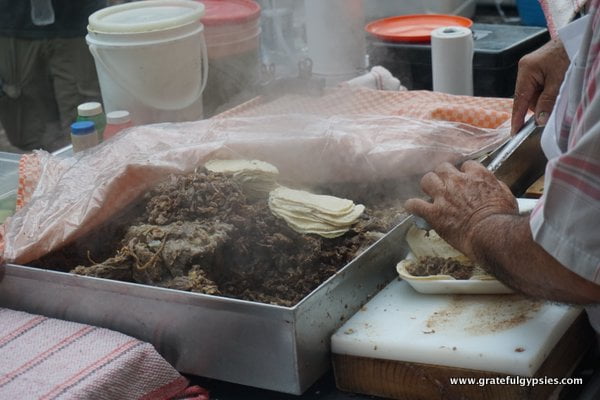Asking Questions in Spanish Guide
Hacer preguntas es importante en todos los idiomas. Hoy vamos a practicar haciendo preguntas en español (Asking questions is important in every language. Today we’re going to practice asking questions in Spanish).
Spanish Question Words
Let’s start out by reviewing the question words in Spanish. Here’s a nice little table that you can copy and paste or even print out to study from:
¿Qué?
¿Cuándo?
¿Dónde?
¿A dónde?
¿Cómo?
¿Quién/Quiénes?
¿Por qué?
¿Cuánto/Cuánta/Cuántos/Cuántas?
¿Cuál/Cuáles?
What?
When?
Where?
To where?
How?
Who?
Why?
How much/How many?
Which?
To clarify, quién is singular while quiénes is plural. The reason there are four words for “how much/how many” is because there are both masculine and feminine as well as singular and plural options. It can get a bit confusing for sure but you start to get it with more practice!
Speaking of practice… before we look at some examples, I’d like to challenge you to think of a question using each of those words above. Go ahead and write it down, or even leave it below as a comment!
Examples
Now here are 2-3 examples of each question word in use. I’m not putting them side by side with English translations. I’d like to challenge you in this post to read and answer the questions in Spanish. If you need a translation, you can find them below.
Qué
¿Qué es esto?
¿Qué quieres tomar?
¿Qué música te gusta?
Cuándo
¿Cuándo trabaja (usted)?
¿Cuándo necesitamos salir?
¿Cuándo puedes hacerlo?
Dónde
¿De dónde eres?
¿Dónde está el baño?
A dónde
¿A dónde quieres viajar?
¿A dónde vamos a ir mañana?
Cómo
¿Cómo estás?
¿Cómo se dice…?
¿Cómo puedo ir al aeropuerto?
Quién
¿Quién es él?
¿Quién quiere venir?
¿Quién llamó?
Por qué
¿Por qué estudias español?
¿Por qué no?
¿Por qué te gusta?
Cuánto/Cuánta/Cuántos/Cuántas
¿Cuánto cuesta?
¿Cuánta leche?
¿Cuántos hermanos tiene usted?
¿Cuántas personas hay?
Cuál/Cuáles
¿Cuál es tu nombre?
¿Cuáles son suyos?
¿Cuál es tu número de teléfono?
English Translations
What is that?
What do you want to drink?
What music do you like?
When do you work?
When do we need to leave?
When can you do it?
Where are you from?
Where is the bathroom?
To where do you want to travel?
To where are we going tomorrow?
How are you?
How do you say…?
How can I get to the airport?
Who is he?
Who wants to come?
Who called?
Why do you study Spanish?
Why not?
Why do you like it?
How much is it?
How much milk?
How many siblings do you have?
How many people are there?
What’s your name?
Which ones are yours?
What is your telephone number?
I’m sure you’re wondering why the question “¿Cuál es tu nombre?” is used as “What’s your name?” and not “¿Qué es tu nombre?” That’s just the way it is. Even though cuál is usually translated as “which,” it is often used in questions that would use the word “what” in English.
Perhaps you’ve also learned to ask “¿Cómo te llamas?” when you want to know someone’s name. It literally means “How do you call yourself?” There’s a good Wikibook for beginners that covers this for more practice.
This is not the only example of cómo being used to ask a “what” question. Take for instance my post called “¿Cómo es la comida mexicana?”, which means “What is Mexican food?” I originally titled it “¿Qué es la comida mexicana?” but was corrected and changed it.
Video Practice
I came up with those questions with the help of my teacher when I was studying Spanish in Puerto Vallarta. You can follow along with a video we made so you can hear his native pronunciation. For beginners, I recommend you listen the first time then try to repeat the second time.
Asking Yes/No Questions
You don’t always need a question word to ask a question in Spanish. To ask yes/no questions, you just raise the tone of your voice at the end of a statement. I always think of Ron Burgundy in “Anchorman” when someone slipped a question mark into the teleprompter…
Take for example the statement “Él tiene un perro” (He has a dog). How do you think you would ask the question “Does he have a dog?”
If you guessed “¿Él tiene un perro?”, then you’re right. In writing, the only difference is the use of the question mark. In speaking, you just need to use rising intonation at the end. It’s that simple.
Just look at a few more examples:
¿Hay una mesa libre? (Is there a free table?)
¿Tienes un bolígrafo? (Do you have a pen?)
¿Ellos vienen a la fiesta? (Are they coming to the party?)
As in English, you can answer these types of questions simply with sí o no. It’s that easy!
I hope this beginner’s guide to asking questions in Spanish has been helpful. I encourage you to practice as much as you can. After all, asking questions starts a conversation! For some more advanced practice asking questions in Spanish, you can check out this post.
Posteado en Spanish Articles (Facebook)







